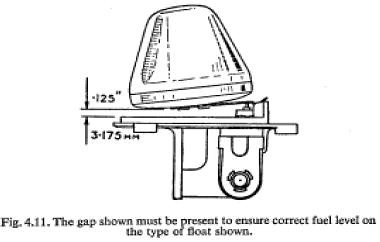Just to add my 2 cents. I installed the Weber DGV with the Pierce manifold (Came all as a kit) and the car runs great. Im getting around 38 mpg and usually I dont even need to pull the choke to get the car to fire right up. The only thing I noticed with the Webers is they have a delay when sitting still and getting ready to get rolling. That you just get used to and learn to compensate for it. I dont race my midget or anything so it really doesnt matter to me. I did see that if you shop around you can get the entire kit for a lot less then what Moss sells it for. After some investigation I also pruchased a fuel regulator as this carb only likes around 3 lbs of fuel pressure. If its outside of that range then you can have some issues with it I understand.
I guess it all boils down to what you have experience with. I have never used the SU's and only delt with the Zenith Stromberg prior to the change. And really that wasnt a bad carb it just had seen its day so I replaced it with something a bit less attentive. That Zenith had a lot of variables to keep up with for it to stay tuned.
I guess it all boils down to what you have experience with. I have never used the SU's and only delt with the Zenith Stromberg prior to the change. And really that wasnt a bad carb it just had seen its day so I replaced it with something a bit less attentive. That Zenith had a lot of variables to keep up with for it to stay tuned.

 Hi Guest!
Hi Guest!

 smilie in place of the real @
smilie in place of the real @
 Pretty Please - add it to our Events forum(s) and add to the calendar! >>
Pretty Please - add it to our Events forum(s) and add to the calendar! >> 





